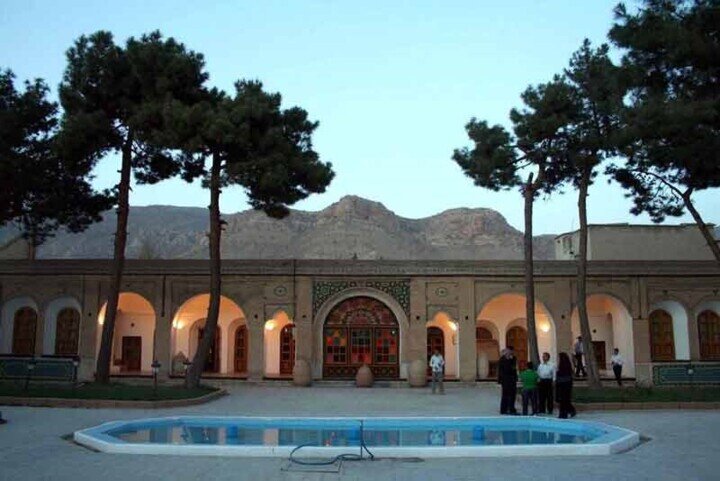Ilam, land of old treasures

TEHRAN—Ilam province, with a civilization history of 11,000 years old, is land of endless treasures of culture and art.
Three outstanding treasures of Ilam province including Vali Castle, Darrehshahr Archaeology Museum and Agriculture Museum of Falahati Palace are symbols of the glory of the civilization and customs of this ancient land, IRNA reported.
Vali Castle
Anthropology Museum of Vali Castle in Ilam dates back to 120 years ago.
Built in 1908 upon the order of Gholamrezakhan Vali (Abouqaddareh), it was constructed on the historical mound of Chaqamirag in Ilam province.
Covering an area of 6487/17m, the castle has a trapezium façade. The castle has three entrances of which the major one is built of bricks in an octagonal style. The middle part of the southern angel of the castle opens to the street through several successive stairs.
The stairs show that the level of the building was higher than the area around the castle. There are two vestibules at the end of the doors providing light for the rooms. The vestibules are decorated with several brick decorations and beautiful arches.
Made of mortar and brick, the ceilings of all the rooms are decorated with beautiful arches in the Roman style accompanied with colorful tiles. The castle holds 22 rooms and six basements. It is estimated the basements were used for rest in spring and summer and in older times as prison.
The royal chamber of the edifice has also large wooden windows with unique plasterworks and patterns of flowers and a little stone pond in the middle.
Colorful glass is used in decoration of the wooden doors and windows. The main patterns on the walls belong to the pictures of the rulers and their spouses. There are also two spaces at the end of the edifice leading to shallow hallways into the yard and the towers.
The castle has turned into anthropology museum after several phases of renovation. The renovation process started in 2006. Currently, it is a cultural place for representation of customs and traditions, local attires and lifestyles of Ilam people.
Historical professions such as agriculture, felt making, kilim weaving, Jajim weaving and carpet weaving as well as living in black tents and special customs such as wedding ceremonies of Ilam people have been put on display. In addition, introduction of prominent personalities of the province is an attractive part of the museum.
The museum hosts handicraft fairs and stalls for local souvenirs during Nowruz holidays.
It is a symbol of cultural and social identity of the Ilam people.
Darrehshahr Archaeological Museum
Darrehshahr Archaeological Museum is the first specialized archaeological museum of Ilam province which was inaugurated in 2005 in Darrehshahr city.
The museum is a precious collection of ancient items and historical relics particularly pertaining to Sassanid era and ancient city of Darrehshahr.
Darrehshahr is considered the first city of Sassanid era. It boasts a large part of 9,000-year-old history of Ilam province. It has turned into a special destination for those interested in Iran’s history and civilization.
Darrehshahr plays an important role in introducing the region’s history and civilization given its numerous monuments such as ancient city of Seymareh (Madaktu).
Head of Darrehshahr Cultural Heritage, Tourism and Handicrafts Department Seyyed Mojtaba Farhadi said Darrehshahr Archaeological Museum has 220 ancient items pertaining to different eras.
The ancient items including the relics identified during 10 excavation seasons in Madaktu city pertain to Sassanid and Achaemenid era.
He said Darrehshahr Archaeological Museum witnessed over 500,000 visits during Nowruz 1404 holidays and last Iranian year, indicating the importance and attractiveness of this cultural site for domestic and foreign tourists.
The museum also has ancient objects from other cities which indicate the glory of Ilam ancient civilization, architecture of ancient cities and art of ancestors. They reveal many truths about culture, religion and livelihood of local people.
Agriculture Museum of Falahati Palace:
The Agriculture Museum of Falahati Palace with four display sections, introduces traditional agricultural practices and tools used in the past.
In the first section, stone tools from Alikesh Hill, dating back more than 8,000 years BC, including blades, microblades, and flint scrapers, are exhibited.
In the second section, traditional agricultural steps including planting, tending, and harvesting are depicted using traditional methods in the last century.
The third section is dedicated to herbal plants and an introduction to their properties.
And in the fourth section, documents related to old agricultural lands and traditional agricultural tools such as the threshing sickle can be seen.
Based on archaeological data, Ilam is considered the oldest province of Iran. As an important part of the Elamite civilization, which was located in the Mesopotamian region of Iraq, it has an ancient history of 11,000 years.
Ilam boasts 1,500 ancient, natural and tourism attractions, of which 774 have been registered on the National Heritage List. Out of them, 737 are spiritual attractions, six are natural attractions and seven pertain to Sacred Defense sites.
KD
Leave a Comment